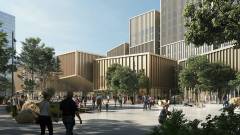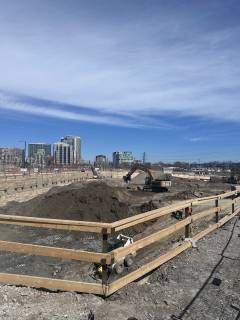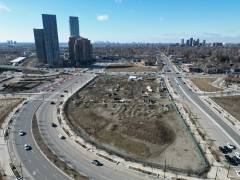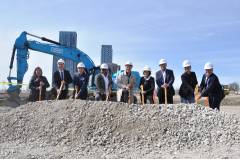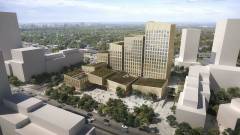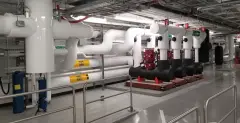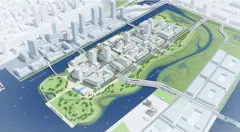Client: City of Toronto
Year: 2019 – Present
Project Highlights
- Etobicoke Civic Center (ECC) first to target Toronto Green Standards Tier 4
- ECC was breaking ground in 2024
- Fossil free DES for Waterfront Toronto at Villiers Island
Low Carbon Networks with Geo-exchange
The City of Toronto engaged FVB to develop conceptual designs and associated business cases for Low-Carbon Thermal Energy Networks in three different nodes across the City. The effort will serve as the basis for municipal coordination with private partners for development of new district energy systems in Toronto. A range of state-of-the-art technologies were evaluated, including geo-exchange, sewer heat recovery, biomass, and biogas.
In the Villiers Island Precinct, FVB worked with multiple different municipal and private partner stakeholders to envision energy scenarios to create a landmark project in energy leadership. The project addressed Toronto’s goal of becoming net zero before 2050. The effect of Toronto’s sustainable design requirements for new city-owned and private developments, the Toronto Green Standard (TGS), is incorporated into FVB’s designs.
The Etobicoke Civic Centre Precinct (also known as the Bloor-Kipling Precinct) is planned as a near zero emissions community. Enwave Energy Corporation will provide energy to the entire Bloor-Kipling Precinct through a district energy system. The Civic Centre is a mixed-use building on the 18 acre site that rises in nine volumes: five low rise and four high rise. The district energy plant will help the Civic Centre building achieve Toronto Green Standard Version 3 Tier 4 performance standards.
As a result of this business case development, work has advanced for the first node – the Etobicoke Civic Centre DES Precinct – with the development of the district energy system to serve the area.
FVB Energy performed a business analysis of a new District Energy System in the proposed Etobicoke Civic Centre (ECC) Precinct. The analysis addressed the capital expenditures (CapEx), operating expenditures (OpEx), and delineated conceptual designs and technical energy profiles for district energy system scenarios and two different business-as-usual (BAU) cases for six (6) buildings contained within the ECC Precinct.
FVB prepared a concept that utilized geothermal energy that was optimized for cost and GHG emissions reduction. Annual heating and cooling loads were analyzed and an optimal size for the geo-exchange system was developed so that the geothermal field will be thermally balanced, i.e., the ground will not gain or lose temperature over time. Capital costs for multiple different geothermal system sizes and designs were estimated, and O&M costs were modelled for the geo-exchange heat pumps in conjunction with conventional chillers and boilers to supplement the plant.
In the Villiers Island Precinct, a renewable energy screening matrix was used to determine which technology(ies) are best suited for the node. Scoring criteria and weighting were developed in conjunction with stakeholders and applied to determine the highest weighted scores. Subsequently, a framework for a District Energy System (DES) concept and capital cost estimate based on the outcome of the screening were created.
FVB Scope of Work:
- Phase 1 (ECC): 62,900 m2; Full Build-Out: 262,000 m2
- Heating Peak Load: 12.7 MW; Cooling Peak Load: 2,700 tons
- Phase 1: 190 boreholes, 650 ft deep
- Conceptual Design + Business Case
More Information
Visit ECC and Villiers Island
Keywords
Community Energy, Conceptual Design, Business Case, Low Carbon Energy, Geoexchange, Heat Recovery Chillers








